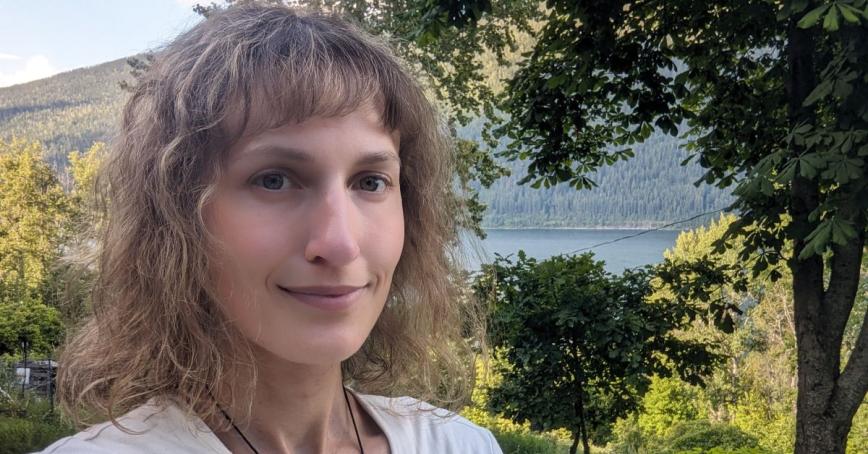Seeking simple solutions to climate concerns
Topics
Featured
Share online

Learn more about the Master of Science in Environment and Management at Royal Roads University
When Margot Webster opted to pursue a master’s degree, she wanted a change of pace from her analytical desk job. She wanted to work with her hands.
Now, in the home stretch of that degree, she likely got more than she bargained for. Webster’s backyard has been taken over by kiddie pools full of cattails and bulrush, and she’s a regular at the hardware store, getting tools and advice alongside an unexpected education in construction.
“That was the hardest part of this whole project,” she laughs. “I am not a builder.”
Her thesis for her Master of Science in Environment and Management at Royal Roads University tackles a long-standing problem in Shuswap Lake: algal blooms, caused by excess nutrients in the water. They can be naturally occurring, but are increasing in frequency, possibly due to a combination of warmer temperatures, nearby agriculture or other factors.
“They have a big impact on the aquatic ecosystem, making it unlivable for fish and other species,” explains Webster, who is also an employee with the BC Ministry of Environment and Climate Change Strategy. The blooms can also be toxic to wildlife, pets and people.

Her course work at RRU inspired her to identify nature-based solutions. That’s how she landed on the idea of Floating Treatment Wetlands (FTWs).
These buoyant platforms are filled with wetland plants, whose deep roots extend into water and act as a biofiltration system. Like all nature-based solutions, they are simple by design.
With background as a biologist, she says she typically categorizes things as either natural or as a man-made disturbance.
“I like that this is a man-made disturbance, but it may also be beneficial.”
FTWs have already proven successful in waste-water treatment ponds and other controlled human-impact situations. And while they’ve been tried in natural bodies of water – such as rivers and lakes – there’s little data on whether they have a measurable impact on water quality. That’s where Webster’s research comes in.
In late June, she waded into the knee-deep water of the Salmon River, a tributary to Shuswap Lake, to anchor her structures to the river bottom.
Typically, FTWs are built from a type of poly foam.
“My thesis supervisor told me it would be unethical to put foam in the natural environment,” she says. Instead, Webster committed to building a fully biodegradable model.
That meant starting from scratch: experimenting with coconut coir mats, burlap and wood-frame boxes; testing for buoyancy; tweaking the design and trying again.
“I think a lot of people say, ‘Why isn't this project out in the world already?’” says Webster. “I'm happy to experience firsthand how much energy goes into a project like this. It takes time; it takes funding, and a lot of planning.”
The Shuswap Watershed Council is helping to fund her work, as they have taken an active role in protecting the health of the watershed.
Every month this summer, Webster will return to Salmon River to collect water samples both upstream and downstream from her FTWs. The goal is to see whether phosphorus and nitrogen levels are less concentrated after passing through the wetlands. She’ll also collect plant-tissue samples, to test them for nutrient concentrations.
“The results will be pretty important, because algal blooms aren’t just happening in the Shuswap Lake. The whole Okanagan is seeing them,” says Webster. She’s hoping her results will help determine whether FTWs are worth investing in, on a larger scale.